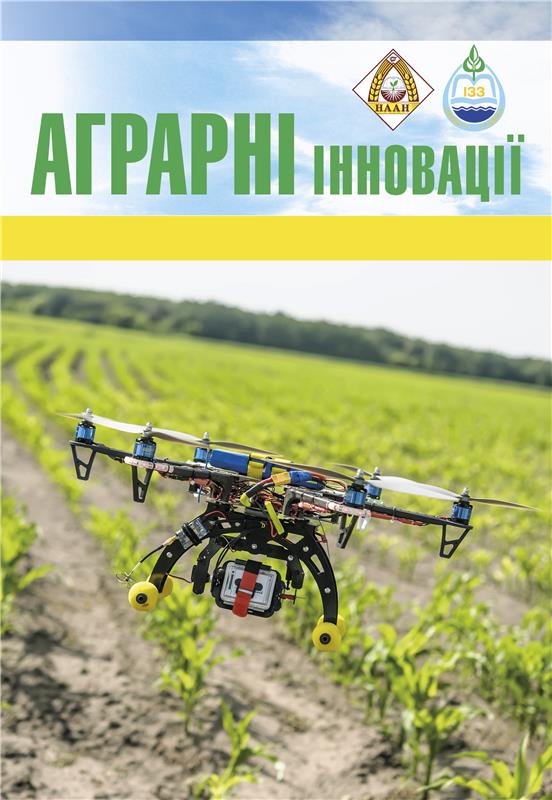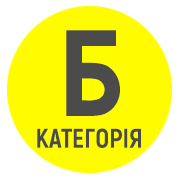THE ROLE OF BIODESTRUCTORS, PRE-SOWING SEED TREATMENT, AND OPTIMIZATION OF MINERAL NUTRITION IN SHAPING SUNFLOWER YIELD
Abstract
The aim of the research was to determine the yield of sunflower seeds grown during 2022–2024, depending on the use of various biological stubble destructors, pre-sowing seed treatment, and anti-stress agents for foliar feeding. Materials and Methods of the Research. The studywas conducted with a mid-early hybrid sunflower PL 130 from 2022 to 2024 on the fields of the Private Agricultural Firm "Skhid," located in the village of Dovha Prystan, Pervomaiskyi District, Mykolaiv Oblast. The soil type was typical black soil. The preceding crop in the experiment was winter wheat. The experiment was a two-factor design. Factor A involved the use of stubble destructors and Factor B involved pre-sowing seed treatment with the biopreparation. According to the research results, it was established that the use of the anti-stress agent "Stop Stress" for foliar feeding (at the six-leaf stage) increases sunflower yield to 2.64 t/ha (seed treatment with water) and to 2.76 t/ha (seed treatment with Mycofriend). The highest average yield over three years of cultivation was achieved with the variant using Ecostern Classic in combination with fertilizers, pre-sowing seed treatment, and anti-stress agent for foliar feeding, reaching 2.89 t/ha. The treatment of seeds with Mycofriend provided greater yield increases compared to treatment with water. The research confirms the effectiveness of incorporating biological destructors, pre-sowing seed treatments, and anti-stress agents into sunflower cultivation technology to increase grain yield, opening new prospects for growing this crop after winter wheat. The conclusions indicate that combining modern stubble destructors, pre-sowing seed treatments, and antistress agents for foliar feeding is a promising strategy for optimizing sunflower cultivation under changing climate conditions, ensuring stable yield increases without degrading soil fertility.
References
2. Сидякіна О. В. Ефективність біодеструкторів у сучасних агротехнологіях. Таврійський науковий вісник. 2021. № 119. С. 123–129. DOI https://doi. org/10.32851/2226-0099.2021.119.16
3. Панфілова А. В., Гамаюнова В. В., Дробітько А. В. Урожайність пшениці озимої залежно від попередника та біодеструктора стерні. Scientific Progress & Innovations. 2019. № 3. С. 18–25. https://doi. org/10.31210/visnyk2019.03.02
4. Іваненко П. І. Вплив передпосівної обробки насіння на врожайність соняшника. Аграрна наука. 2019. № 3. С. 45–49. DOI: 10.31073/agro.2019.03.07
5. Advances in Nutrition of Sunflower on the Southern Steppe of Ukraine / Kovalenko O., Gamajunova V., Neroda R., Smirnova I., Khonenko L. Springer International Publishing Switzerland. Soils Under Stress. 2021. Р. 215–223. DOI: 10.1007/978-3-030-68394-8_21
6. Pokoptseva L., Onyshchenko O., Gamayunova V., Gerasko T., Zoria M. Sowing properties of sunflower seeds of Talento hybrid under the influence of a modified plant growth regulator. Scientific Horizons. 2024. № 27(8). Р. 59–68.
7. Коваленко О. А. Агроекологічне обгрунтування та розробка елементів біологізованих технологій вирощування сільськогосподарських культур в умовах Півдня України: дис. … доктора сільськогосподарських наук: 06.01.09 – рослинництво. Херсон, 2021. 592 с.
8. Петров В. С. Використання біодеструкторів у технології вирощування соняшника. Землеробство. 2020. № 2. С. 33–37. DOI: 10.31867/ zemlerobstvo2020.02.05
9. Сівозміна як захід ресурсозаощадження та екологічної рівноваги Південного регіону України в повоєнний період / Гамаюнова В. В., Хоненко Л. Г., Бакланова Т. В., Пилипенко Т. В. Climate-smart agriculture: science and practice: Scientific monograph. Riga, Latvia: Baltija Publishing, 2023. С. 361–394. DOI: https://doi. org/10.30525/978-9934-26-389-7-18
10. Смирнов А. В. Ефективність позакореневого піджив- лення соняшника комплексними добривами. Вісник аграрної науки. 2021. № 4. С. 52–56. DOI: 10.31073/ visnyk2021.04.09
11. Домарацький Є. О., Добровольський А. В. Вплив позакореневих підживлень комплексними багатофункціональними препаратами на кількісний рівень та якісний склад хлорофілового комплексу в рослинах соняшника. Вісник аграрної науки Причорномор´я. Миколаїв, 2018. Вип. 97-1. С. 142–151.
12. Домарацький Є. О. Вплив рістрегулюючих препаратів та мінеральних добрив на поживний режим соняшника. Наукові доповіді НУБіП України. Серія: Агрономія. 2018. № 1(71). URL: http://journals.nubip. edu.ua/index.php/Dopovidi/article/view/10027
13. Коваленко О. М. Комплексний вплив агротехнічних заходів на продуктивність соняшника. Сільськогосподарська наука. 2022. № 1. С. 27–31. DOI: 10.32945/agrar2022.01.04
14. Дослідна справа в агрономії : навч. посібник : у 2 кн. Книга 1. Теоретичні аспекти дослідної справи / Рожков А. О., Пузік В. К., Каленська С. М. та ін. ; за ред. А. О. Рожкова. Х. : Майдан, 2016. 316 с.
15. Дослідна справа в агрономії. Книга друга. Статистична обробка результатів агрономічних досліджень : навчальний посібник / Рожков А. О., Каленська С. М., Пузік Л. М. та ін. Х. : Майдан, 2016. 298 с.
16. Дідора В. Г., Смаглій О. Ф., Ермантраут Е. Р. Методика наукових досліджень в агрономії: навч. посіб. К.: Центр учбової літератури, 2013. 264 с.






